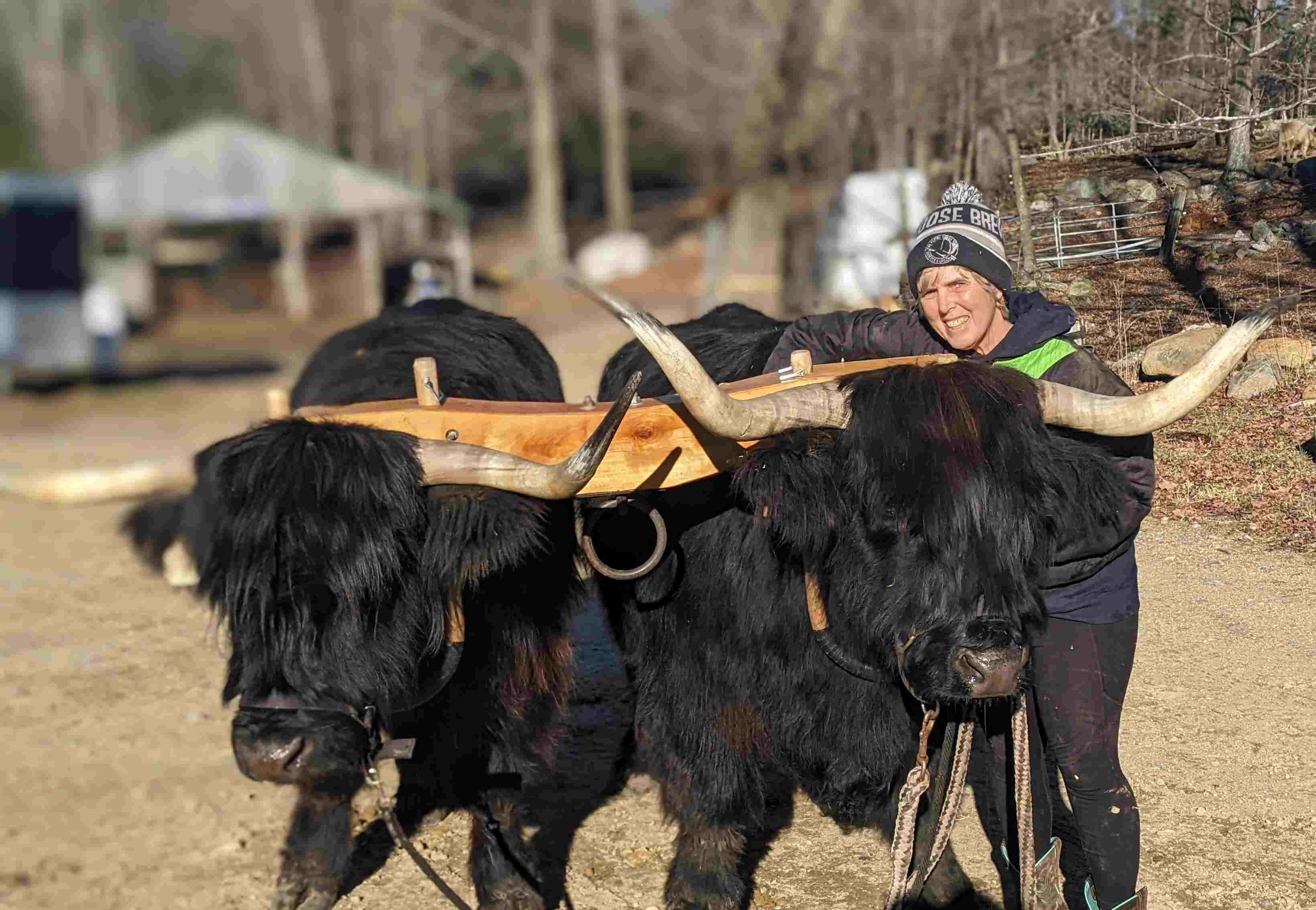Reviving a Heat-Stricken Calf
posted on
June 21, 2021

Dancer and her hours-old calf Elsie cool off in the shade of the holding pen.
Newborn calves are more delicate than you might think. They do not control their internal temperatures well and can die from cold or heat that wouldn’t bother an older cow. For instance, one frigid January, 24 hours in the warmth of our kitchen saved newborn-calf Lucy from dying of hypothermia.
Heat Wave
At the other extreme was Elsie, a calf born during a recent heatwave. The morning I found her, it was 80 degrees in the shade, and headed toward 100. Poor Elsie, with a heavy Highlander coat of hair, was wilting. Farmhand John carried this limp lump of a calf, legs dangling, to the shade of the holding pen, mother following behind. The calf stood for a moment, but then lay down, panting. My vet was unavailable, so I administered penicillin and, not sure if she had successfully nursed, squirted a pint of warmed raw milk into her mouth.
Later that day, she stood to nurse, and on the second day, she nursed every few hours but was not thriving. She lay panting when in direct sunlight and didn’t jump or bounce around with energy as a 2-day-old calf should. I locked mother and calf in the shade of the pen with an electric fan blowing on them both. But it wasn't enough.
A Risky Procedure
Tube feeding would be necessary to get electrolytes into her system to counter her dehydration. I had done this before but it's a risky procedure. If the tube enters the lungs, it can be fatal. I had watched many YouTube videos and gotten first-hand training from a vet but was still reluctant. Yet, in this heat, the calf might die of dehydration, so it was a risk worth taking. Pushing the tube with one hand, I kept the other hand on her neck to follow the tube’s progress down her throat. When I was sure it was positioned properly, John filled the attached bag with two quarts of electrolytes, which flowed into her stomach. As the liquid filled her belly, Elsie’s mouth moved as if she were nursing. Success!
Dehydrated calves also have trouble pooing, so after the tubing, I gave Elsie a warm-water enema. I knew it worked when manure poured onto my farm boots.
More Troubles
By then she seemed to be thriving, but when my vet examined her, she found a hernia about an inch wide beneath Elsie’s navel; dangerous but treatable. The vet showed me how to massage the spot to encourage healing and in a few days, Elsie was all better. Despite her shaky start, Elsie is now a lively, cavorting calf with a long life ahead.
Flora Feeding Update
While my vet was here, I asked her about puppy nutrition. I've been preparing little Flora's food myself instead of relying on highly processed and questionably sourced commercial dog food. When I wrote about it a few weeks ago, a reader questioned my action.
Kathy Hughes sent me this quote from her daughter, a veterinarian: Carole’s “home-cooked diet is missing almost every mineral and will likely result in growth issues in a growing puppy.” I take all responses seriously so, I asked my vet and she confirmed that Flora does need more vitamins. Now Flora gets a daily doggy vitamin pill in addition to ground beef, rice, liver, ginger, berries, and sweet potatoes. Thanks, Kathy, for sharing some good advice.
Lessons learned: You don't have to know everything if you're willing to listen to professionals. Another is to stand aside after giving a calf an enema.



